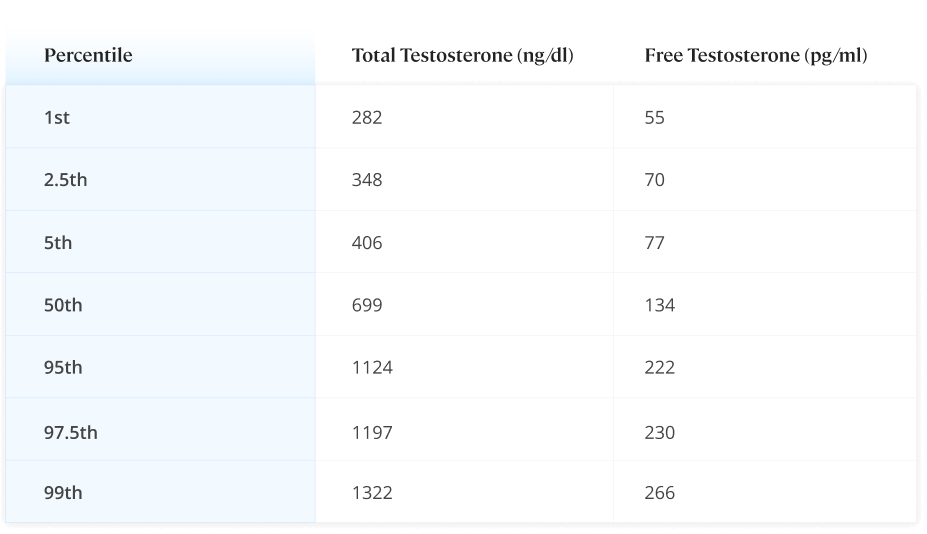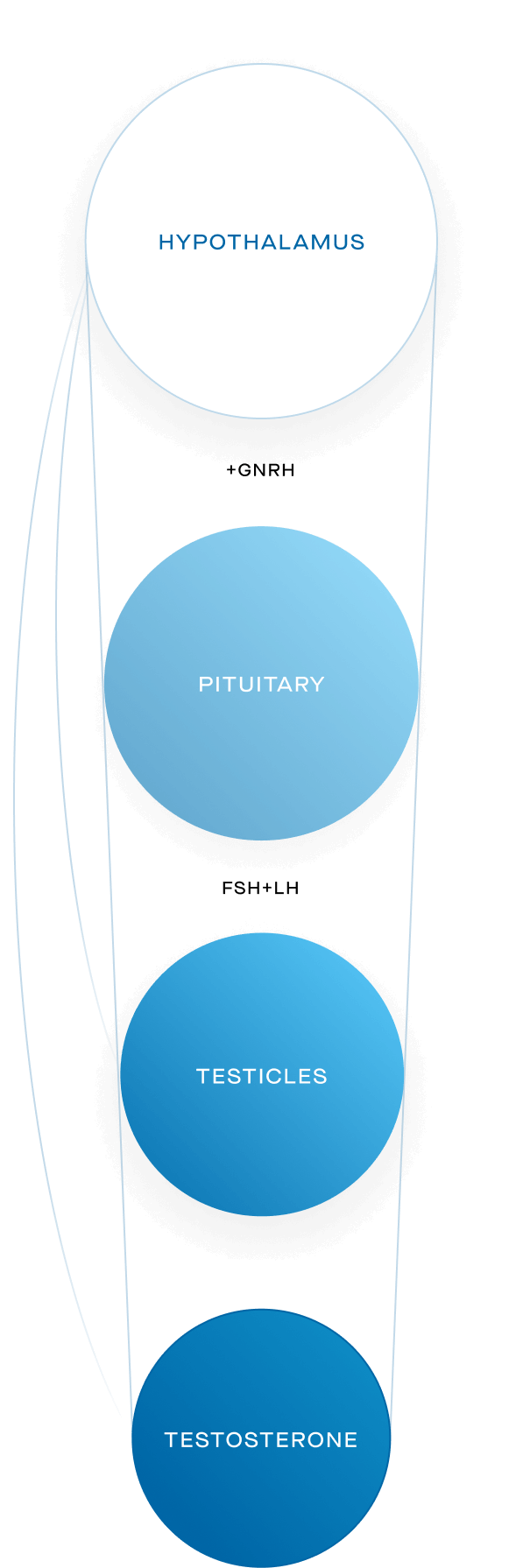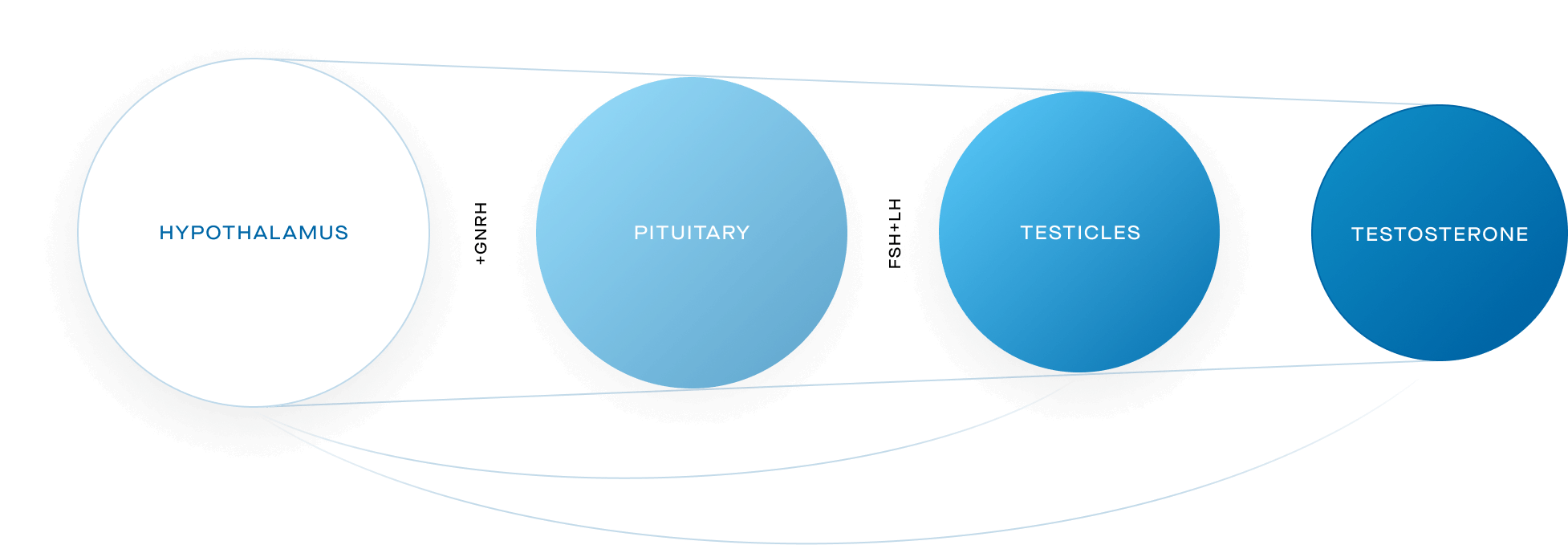Total
Free
Bound
Albumin
SHBG



Low Estrogen/Estradiol
Body & Weight

Sex Drive & Morning Wood

Behavior
Mind

Heart & Anti-Inflammation

You have questions, we have answers.
Review Our Help DeskHow do I know The King Protocol works?
Extensive scientific research and clinical practice have vetted the oral medications used in The King Protocol. You can learn more about the research behind The King Protocol here.
The King Protocol includes CLIA-certified at-home lab testing to evaluate your “before and after” results. These lab kits allow you to see the results for yourself, and are used by your clinician to optimize the pharmaceutical dosage to your unique needs.
Maximus stands behind The Protocol with a Money Back Guarantee which you can learn more about here.
How does the at-home lab kit work?
As soon as you complete your onboarding questionnaire we will ship you your at-home lab kit via priority mail (if qualified).
The kit requires no finger-pricking. Instructions are fast and intuitive.
Completed kits are conveniently picked up from your home by one of our carriers -- at no additional cost to you. Or you can drop it off at one of our carriers if you would prefer.
Within days of the completed kit reaching the lab, your results will be shared with you and your Maximus doctor.
Depending on your location and how fast you complete the kit once you receive it, the entire process can take as few as 4-5 days.
Is The King Protocol as effective as TRT?
The Maximus King Protocol is a safer alternative to TRT. It is based on extensive scientific research and clinical practice that has validated our approach. In fact, a recent review by top experts concluded that our therapy should “become the primary medication for men with secondary hypogonadism (low T) who wish to preserve spermatogenesis (fertility)… and is “a very promising drug for patients with secondary hypogonadism and who are concerned about the negative effects of exogenous testosterone (TRT).”
Read more about how The King Protocol compares to TRT.
What is the cost and what’s included?
The treatment cost for the King Protocol is $199.99/month, which includes doctor consultation and medication (if qualified).
Labs are required in months 1 and 2, and cost $72.50 each. The first kit is shipped upon completion of your onboarding intake to capture your baseline hormone levels. The second kit is shipped upon completion of your followup intake (~30 days later) to capture your hormone changes on The King Protocol. If additional labs are required, costs are passed through directly to you at no profit to Maximus.
Does The King Protocol have any adverse side effects (like hair loss)?
General adverse effects
The adverse effects of enclomiphene have been extensively studied during phase II and phase III clinical trials. The drug is generally well tolerated, however infrequent side effects may occur such as:
— Headache (observed in 3.3% of patients)
— Nausea (observed in 2.1% of patients)
— Diarrhea (observed in 1.9% of patients)
— Common Cold (observed in 1.7% of patients)
— Hot flush (observed in 1.7% of patients)
— Joint pain (observed in 1.2% of patients)
— Dizziness (observed in 1% of patients)
Overall, there was no evidence of drug toxicity and rates of adverse events were not significantly different from placebo. 1
Hair loss
Some people ask how our protocol could affect hair loss, because they've heard Testosterone Replacement Therapy (TRT) worsens hair loss, since testosterone converts to DHT, another androgenic hormone that may contribute to male pattern baldness.
Our protocol is very different than TRT by stimulating your own natural production of testosterone, which affects DHT differently than synthetic testosterone taken from outside of the body. A study showed that testosterone replacement gel (1% 10g) increased DHT by 8X as much as enclomiphene, even at higher dosages than what we typically use (12.5-50 mg).
TRT also shifts the balance between the two hormones (DHT:TT ratio) towards DHT, while enclomiphene maintains the balance. Thus, enclomiphene should have minimal effect on hair loss compared to Testosterone Replacement Therapy (TRT), and is much more "hair safe/friendly" for most people. 2
If you are experiencing these or other side effects, please immediately contact your licensed clinician through the patient portal.
1. Earl JA, Kim ED. Enclomiphene citrate: A treatment that maintains fertility in men with secondary hypogonadism. Expert Rev Endocrinol Metab. 2019;14(3):157-65.
2. Ronald D. Wiehle, PhD, Gregory K. Fontenot, PhD, Michael S. Willett, PharmD, Wilfredo D. Garcia, MD, and Joseph S. Podolski, BS, MS. Enclomiphene Citrate Stimulates Serum Testosterone in Men With Low Testosterone Within 14 Days Journal of Men's Health.Dec 2014.196-205.
What states is The King Protocol available in?
Maximus currently serves all US States, except Alabama, Alaska, Indiana, and the District of Columbia. Maximus does not serve US Territories and Freely Associated States at this time.
We are expanding as quickly as possible. In the meantime, sign up for our newsletter to get updates and gain access to our free E-Book and Discord community. You can sign up by visiting Testosterone 101 or scrolling to the bottom of this page and providing your email.
Can I use my HSA or FSA card to pay for The King Protocol?
Maximus accepts Health Savings Accounts (HSA) and Flexible Spending Accounts (FSA).
Using your HSA/FSA is easy. Simply use your HSA/FSA card as you would any other debit or credit card when providing your billing information.
HSA/FSA plans vary on what services they are willing to cover. If you are uncertain whether your plan covers Maximus' services, check with your plan administrator.
Is The King Protocol vegan-friendly and kosher?
Yes to both, though you should specify your special needs during your onboarding so that your doctor prescribes the appropriate capsules.
References
- 1. Bhasin S, Pencina M, Jasuja GK, et al. Reference ranges for testosterone in men generated using liquid chromatography tandem mass spectrometry in a community-based sample of healthy nonobese young men in the framingham heart study and applied to three geographically distinct cohorts. The Journal of Clinical Endocrinology & Metabolism. 2011;96(8):2430-2439.


